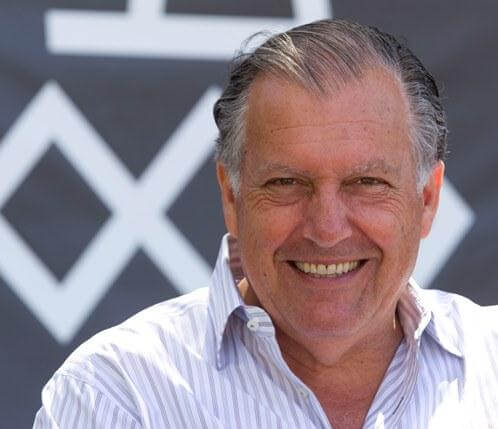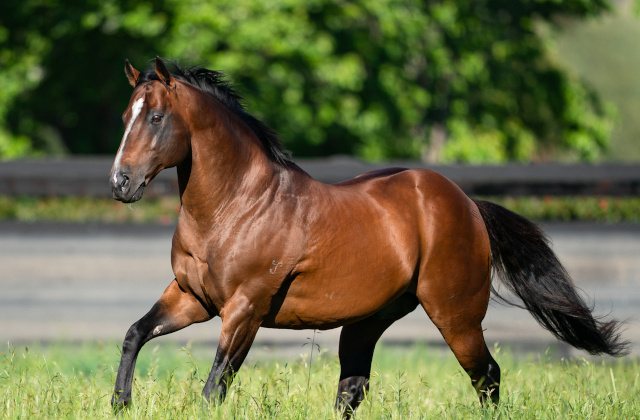Interview with John Messara

The Arrowfield Story concludes with John Messara, Chairman and owner of Arrowfield Stud, and Chairman of Racing NSW, answering ten questions put to him this week.
JM: I seek much the same attributes as other stallion managers do, but I generally will not compromise on the pre-potency of the subject horse’s sire line.
How do you define what makes a colt a must-have stallion prospect?
Stallions do come in all shapes and sizes and I have to say that a sixth sense comes into play when you come across the “must have” animal. Danehill is a case in point.
We undertook extensive research to determine which son of the pre-potent sire of sires of the time, Northern Dancer, would provide the most suitable line to acquire for Australia. Danzig shone out for us because of his progeny’s aptitude for sprinting and their effectiveness on grass surfaces. He also boasted an outstanding strike rate of elite runners.
However, at the time Danzig was by no means the most popular of Northern Dancer’s sire sons and this presented us with an opportunity. We tracked all of Danzig’s live runners and zeroed in on Danehill, with his impeccable stallion’s pedigree and sprinting prowess. As soon as he broke through for his Group 1 win in the Haydock Sprint Cup, I flew over from Australia with our vet Dr Percy Sykes to inspect him. The colt had taken but half a step out of his box and the decision was made!
Which major race success has meant the most to you personally, and why?
You get the most satisfaction when you make a judgment call and it comes off against the odds.
My first Group 1 winner was a purchase I made as a foal walking through a paddock in New Zealand in 1980. I had gone there to inspect a race filly which was for sale and I was drawn to this other filly galloping in a paddock of foals. I made a bargain with the breeders to buy both fillies, and the foal I picked out of the paddock ,which I named Starzaan, went on to win the Group 1 AJC Australian Oaks.
We set her for that very race from the start and she was an outsider in a very competitive renewal. So certain was I that she could win the race, that I invited all my family, as well as close friends from the US and all my office staff to come and watch her win. It was an unforgettable day. It’s difficult to describe to a non-racegoer the feeling that overcomes you when your silks go past the post first in a circumstance such as this!
What are your still-to-be-fulfilled racing and/or breeding ambitions?
I would like to win Group 1 races at Longchamp and Ascot, both iconic courses with long, wide stretches that present a serious test of class for the very best horses. As in all other sport, elite international competition is the ultimate challenge. There’s nowhere to hide at those two venues and winners of their best races are proper horses.
How do you respond to the inevitable setbacks in business?
People respond to setbacks in different ways. After the initial disappointment, I go into a phase of self- examination to see how I could have avoided it. Generally, setbacks spur me on.
Who has inspired you most throughout your business career?
There is no one particular person, but I have learned much from the many individuals with whom I have dealt. I believe that everyone has something to offer. Within racing, Robert Sangster was a true pioneer, I doubt that many appreciate the role he played in developing today’s international approach to racing and breeding… I have always admired him for that. Percy Sykes, the world renowned vet and a close friend and mentor, has X-ray vision when it comes to horses. I have learned so much from him.
What are the most significant changes you have seen in thoroughbred racing & breeding over the past 30 years?Thirty years ago in Australia, thoroughbred breeding was mostly the domain of farmers and in many cases secondary to their other business activities. Since the 1980s, with advances in communication technology, it is so much more professional in nature with volumes of statistics and information freely available for analysis.
Rightly or wrongly, thoroughbreds have become something of a commodity, and a growing proportion of horses are now bred for sale, and purchased for re-sale rather than racing. More recently, we have the international dynamic of owners prepared to race in multiple jurisdictions.
The biggest change though, might be the competition our sport now faces from other forms of leisure and gambling. In Australia, at least, racing was a mainstream sport, but today we are fighting hard to hold our position.
What advice would you give to an ambitious 20-something man or woman beginning their thoroughbred industry career now?
It’s tough to find positions in our industry. I think a stint at one of the leading auction companies is probably the fastest way to learn a lot about the horse business. You must remember, it’s not where you start, it’s where you finish that matters. However, a bit of scholarship to start with provides a good launching pad. Courses such as the Marcus Oldham program in Australia or Darley’s Flying Start Program provide a valuable base of knowledge. Darley Flying Start will surely prove to be one of Sheikh Mohammed’s enduring legacies to the thoroughbred industry. (Arrowfield employs three Flying Start graduates).
What will Arrowfield be doing in 2018?
I would like Arrowfield to be doing what we do now, but in an even bigger and better way than today, with a strong profile as a globally successful business based in Australia. This year we launch a truly global stallion in Animal Kingdom.
How do you see the NSW and Australian racing industries in five years’ time?
I envisage NSW and Victorian racing as the twin hearts of a vibrant Australian racing industry that is irresistibly attractive to international owners, because of its excellent prizemoney, competition, facilities and integrity.


